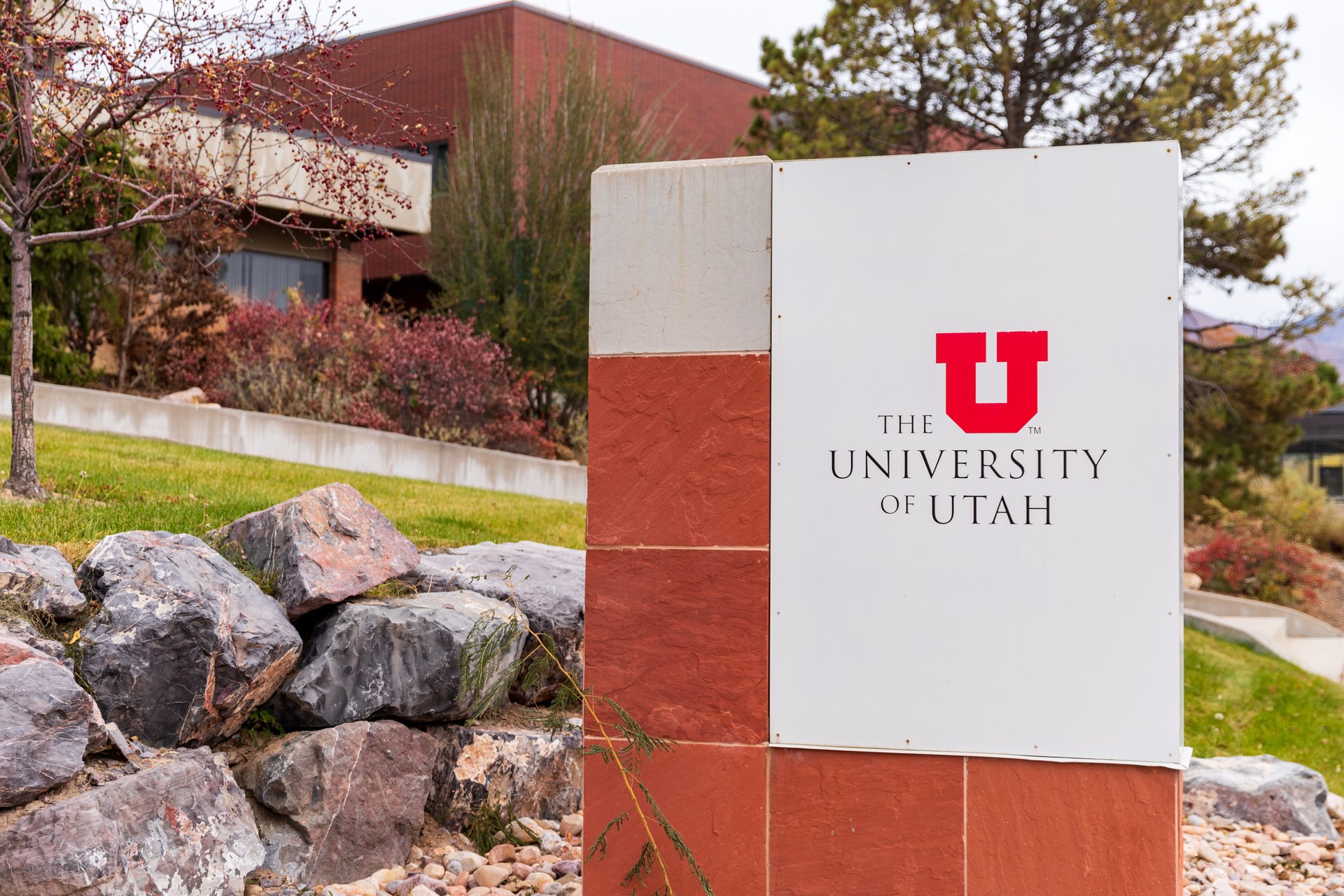Good morning, and thanks for spending part of your day with Extra Points.
Today, I am happy to turn the time over to a guest writer. Nick Beadle writes the JOBS THAT WORK newsletter, which focuses on policy and funding that affect how people get to work. He is a former investigative reporter in the Deep South and a former chief of staff for workforce and communications at the U.S. Department of Labor’s Good Jobs Initiative. You can follow him on Bluesky @jobsthat.work.
I wanted to have somebody like Nick take a crack at a guest post because I think it’s useful for somebody with more of a policy background to explain why President Trump’s recent executive order on college athletics may be meaningful, even if the White House doesn’t have the authority to say, unilaterally make antirust policy. I’ll turn the time over to him.
Well, first, I want to share a message from one of our sponsors, FanBox:
You already know how to reach your fans once they step into your arena. But how are you building great experiences the rest of the year?
The folks at Fanbox believe they have a solution: curated, bespoke subscription boxes, full of unique merchandise and experiences, for super-fans, by superfans. Fanbox already has boxes ready for UNC, Ohio State and Texas fans, with more schools joining the program soon. Boxes include products like player autographs, invitations to special events, posters, shirts, and more. If you want to grow revenues and continue the conversation with your biggest fans, check out Fanbox today.

The Trump Administration has achieved a unique advantage over America’s four-year universities, one that makes its executive order “saving college sports” more potent than you may realize. And to truly understand what that means, let’s revisit a deeply unpleasant afternoon in the ocareer of Mike Stoops, during his stint as Oklahoma’s defensive coordinator.
In a 2014 game against Baylor, the Sooners defense gave up an early deep touchdown to the Bears — the nation’s top offense — following a miscommunication in the defensive backfield. This was not a surprise; the veer-and-shoot offense is built on moving fast, throwing long and doing both by lining up in unorthodox ways that leave defenses out of sorts.
By the third quarter, Stoops’s defense had decided to give at least a five-yard cushion to Baylor’s wide receivers. Baylor happily took the compromise. Sooner fans could see what was happening and could do nothing to stop it, save boo. Instead of giving up a splashy touchdown, Stoops’s defense gave up a more painful and humiliating touchdown by ceding bite after bite in ways that fit the core philosophies of the Baylor offense.
Like Oklahoma that day, America’s universities are providing the second Trump administration a ton of cushion to avoid a killing blow to the federal dollars upon which they have become dependent. The administration is happily taking everything universities are giving them, offering an awful lot of leverage to get significant and painful changes through last week’s executive order. The “saving college sports” executive order opens up another front where university leaders can give up yards and points in hopes that they won’t lose quite so badly.
A little background on why you should care what I think: At the end of last year, I finished an 11-year career in the federal government, most of it as a Department of Labor attorney advising three administrations — Biden, Obama, and the first Trump years— on how to implement workforce funding policies while staying within the complicated laws governing the federal government.
When it comes to the money, the second Trump administration certainly has been aggressive in trying to spend less of it. It’s gotten plenty of what it wanted, but it’s also suffered losses in a few big efforts to stop or end grant programs because, well, the law doesn’t allow it. Courts quickly halted its attempt to freeze all federal financial assistance (even if that halting didn’t always stick). Because of court questions about procedure and authority, it’s also had to continue a couple of workforce funding programs the White House wants dead.
Could more organizations keep their programs alive through more of these cases? Well, the law really isn’t on the administration’s side in several instances, in my opinion. Yet, from my current gig writing a newsletter about funding developments in the world of work, I know of organizations that have not fought back because they’re afraid the administration will spike every single last grant they apply for in the future.
Those concerns may be realistic for four-year colleges, given that federal funding accounts for 10 to 20 percent of some universities’ budgets. Beyond the culture war battles around diversity, the administration and its allies in Congress see fewer people going to college and fewer workers in office jobs filled by college graduates as key to their rethink of the American workforce. The One Big Beautiful Bill Act’s changes to federal financial aid will make it harder for students to attend four-year colleges, which likely will add to the revenue downturns universities face from the enrollment cliff and dwindling state funding streams.
Still, as someone who actually helped claw back misspent federal grants, let me tell you: The administration’s program-killing justifications aren’t good. Also, the … big feelings of administration leaders could put them in a worse legal position.
Case in point: In May, Education Secretary Linda McMahon wrote Harvard, telling the school it “should no longer seek GRANTS [sic] from the federal government” because it had committed sins like hiring former Democratic leaders, reconsidering the value of standardized tests and generally disappointing alumnus Bill Ackman. Beyond broad allusions to race-based preferences, there really isn’t any law cited in the letter, and based upon a cursory search of U.S.Code, “making Bill Ackman mad” does not appear against federal law. As a former grants attorney, I can say this is the type of letter that could severely disadvantage the Education Department — and other agencies — in future litigation about grants.
Yet Harvard is considering settling with the administration for half a billion dollars. The school, like Columbia and Brown before it, is considering giving the administration’s questionable actions a ton of cushion and hoping it stops the offensive.
If these organizations didn’t settle, though, I doubt Trump administration leaders would actually stop every new award to these universities. I track federal grantmaking on a day-to-day basis, and I worked in Trump I. The folks who would stop these awards just aren’t paying that kind of attention, and they may not know the means of actually figuring out how to mind these awards.
But it doesn’t matter what they can do if the universities are willing to give it to them another way. And there isn’t much reason for the administration to stop trying new things to get what it wants from four-year schools. On Thursday, Bloomberg reported that the administration views Harvard’s half-billion payment as “a starting point.”
What does this have to do with the college sports order?
The administration is lobbing another legally unlikely threat of stripping away federal funding if universities don’t do what it wants — even if it’s outlandish and wildly disruptive to colleges that are just settling into the post-House landscape and keeping an eye on potentially even more coming from Congress.
In between complaining about name, image and likeness payments and trying to maintain non-revenue scholarship numbers, the order directs McMahon and Health and Human Services Secretary Robert Kennedy Jr. — who runs a key funder of universities — to plan on pushing the administration’s policies through “federal funding decisions.” It also tells Attorney General Pam Bondi to litigate to stop “unreasonably challenged” antitrust cases — which reads as being aimed at the House case — and tasks Labor Secretary Lori Chavez-DeRemer to issue something that sure sounds like it will say student-athletes aren’t employees.
Again, there are reasons to question whether withholding money due to this order is legal. The Uniform Guidance and Cost Principles, which describe the requirements for funding decisions, don’t speak to questions of whether a collective paid a wide receiver for autographed jerseys or because it wanted a good wide receiver.
But if the administration withholds money because of this order and no one fights back against it — and there are a lot of reasons, smart and not-so-smart, to give in — well, “legal” doesn’t matter so much.
The “good” news?
I wouldn’t say this order doesn’t do anything, and I wouldn’t say it is without consequence, but if you’re looking for something that might look like an upside if you squint, there are things that could mute the consequences it could have.
The administration is fighting too many battles, and I think it’s starting to show for some of the agencies involved. The administration has gutted the career staff that usually make initiatives like this work, and it already distrusted this staff to carry too much of the weight of these decisions. In recent weeks, I have seen lots of little glitches and heard things from stakeholders that signal some buckling from agencies overloaded by a White House that only wants things now — or else. The administration could ask universities to send a lot of letters saying how they’re preserving non-revenue scholarships and call it a day.
And it’s not like the federal government is overflowing with people who understand the intricacies of college sports, in my experiences. For example, the instruction to Chavez-DeRemer isn’t traditionally in the Labor Department’s wheelhouse: “maximiz[ing] the educational benefits and opportunities provided by higher education institutions through athletics.” Obviously, the department could learn, but in a short-staffed environment — where there are a ton of other battles to fight — it may not pick up what it needs to know to be effective in carrying out the administration’s mission. (Although it’s worth acknowledging this also is a great way to make things worse!)
Finally, if any administration is going to respond to the wealthy university donors that underwrite college football, it’s probably this one. Big-money boosters may not care much about grants for the biology department, but they definitely care about keeping five stars, and they’re more likely to have the number of the right person in the Trump administration to convince them to back off.
It's neither the motivation nor the approach I would prefer as someone who follows and cares a lot about this space. But if it works, well, that’s something.
Youth Sports Are Exploding
The youth sports market is set to grow from its current level of around $40 billion to over $70 billion by 2030. Investments in facilities, equipment, training, and tech are pouring in. Direct payments to college players and NIL provide even more fuel for the fire. Much like Extra Points covers the business of college sports, Buying Sandlot covers everything you need to know about the business of youth sports.
Thanks for reading, everybody. We’ve got updates about the Extra Points Bowl coming next week, along with more FOIA Fun, Extra Points Library updates, and a few reported SportsBiz stories. We’ll see you in your inbox on Monday!


















